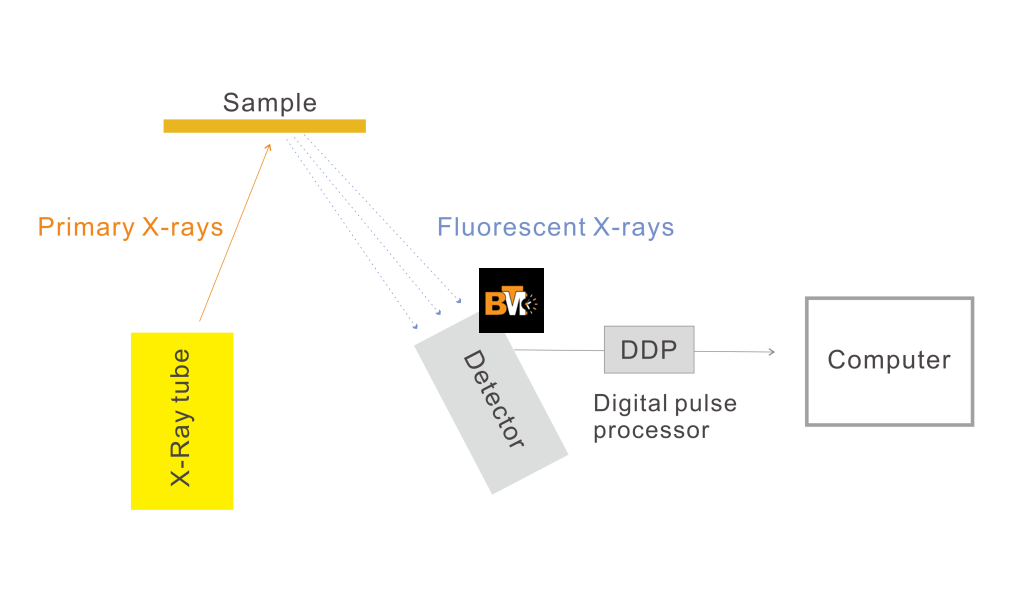XRF analyzers are powerful tools used to find out what materials are made of—without damaging them. These devices are designed to detect the elements inside a sample using a technique called X-ray fluorescence. This means they shine a special kind of light on the material, and then analyze the way the atoms inside react to it. XRF analyzers are popular across many industries because they are fast, reliable, and easy to use. Whether you’re testing metals, minerals, plastics, or even soil, an XRF analyzer can give you accurate results in seconds. In this article, we’ll explore everything about XRF analyzers in a way anyone—even a 10-year-old—can understand.
Why Do People Use XRF Analyzers?
XRF analyzers are used because they give fast results and don’t damage the sample. Let’s say you have a piece of metal and you want to know what it’s made of. Instead of sending it to a lab and waiting for days, you can just point the XRF analyzer at it and get the answer in seconds. That’s why professionals in construction, mining, recycling, and jewelry industries rely on these tools every day. They save time and money. Another reason people use XRF analyzers is because they can test materials right on the spot—no need to cut, break, or destroy anything. Plus, they’re safe to use and don’t require special handling when used correctly. From checking lead in toys to analyzing soil contamination, these tools are used for safety, quality control, and decision-making in real-time.
Where Can You See XRF Analyzers Being Used?
You’ll find XRF analyzers in many industries. In mining, they help determine the types of metals inside rocks. In recycling centers, they sort materials quickly. In manufacturing, they ensure products meet quality standards. In environmental studies, they help scientists check for pollution in soil and water. These analyzers are also used at airports, in museums, and by archaeologists. They’re truly everywhere! They are also critical in forensic science, helping crime labs identify unknown materials. Even food safety professionals use them to detect harmful heavy metals in food packaging and ingredients.
In Jewelry Stores
Jewelry stores use XRF analyzers to check the purity of gold, silver, and platinum. If someone wants to buy or sell jewelry, the store can instantly tell if the metal is genuine or fake. For example, they can confirm if a ring is 18K gold or just gold-plated. This helps prevent fraud and builds trust with customers. XRF technology also helps jewelers follow government regulations that require accurate labeling of precious metals. Because the test is non-destructive, the jewelry isn’t scratched or damaged during testing. Many pawn shops and gold buyers rely heavily on these tools every day.

In Construction
In the construction industry, XRF analyzers are used to test metal parts, pipes, paints, and coatings. Builders and inspectors use them to check for hazardous materials like lead-based paint in old buildings. They also use them to verify if metal parts meet specific standards. If a steel beam isn’t made of the right alloy, it could weaken the structure. XRF helps prevent dangerous building mistakes by ensuring every material is correct. It’s also used to monitor welding quality and to inspect concrete additives.
In Science Labs
Science labs use XRF analyzers to study the chemical composition of different samples. Whether it’s a rock from space or soil from a farm, scientists can use XRF to find out what it’s made of. It’s very helpful in geology, chemistry, archaeology, and environmental science. Students and researchers also use benchtop XRF devices to test samples in controlled lab environments. These machines help in studies related to climate change, pollution, and natural resources. They are also common in pharmaceutical research to test raw materials and tablet coatings.
How Safe Is an XRF Analyzer?
XRF analyzers are generally safe when used properly. They do use X-rays, but the amount is very low and controlled. Most handheld models come with shielding and automatic shutoff features to protect users. Operators are trained to point the device only at the sample, not people. Users should avoid direct exposure and always follow safety instructions. Wearing gloves and keeping the tool away from the body is a good habit. While the radiation exposure is minimal, most devices are regulated and approved by safety agencies like the FDA or OSHA. So, if you use it correctly, an XRF analyzer is just as safe as an X-ray scanner at the airport.
Types of XRF Analyzers You Can Buy
There are mainly two types of XRF analyzers: handheld and benchtop. Handheld XRF analyzers are portable, battery-powered devices that you can carry around. They are perfect for fieldwork, like mining, construction, and metal recycling. Benchtop XRF analyzers are bigger, more powerful, and stay in one place, usually in a lab or testing facility. They are more accurate and are used for detailed analysis. Both types work on the same principle, but each has its own advantages. Some modern XRF analyzers also come with advanced software, touchscreen displays, Wi-Fi, and cloud storage features. Depending on your needs and budget, you can choose between basic models or high-end professional versions.
Handheld vs Benchtop: What’s the Difference?
Handheld XRF analyzers are small and easy to carry, making them ideal for on-the-go testing. If you need quick results in the field, handheld is the way to go. They are used in construction sites, scrap yards, and mines. On the other hand, benchtop XRF analyzers stay in labs or offices. They are bigger and need a power outlet, but they offer more detailed and accurate results. These are used by scientists and researchers for high-precision testing. Handheld models are great for speed and convenience, while benchtop models are better for accuracy and in-depth analysis.
Handheld XRF Analyzer
Handheld XRF analyzers are a favorite in industries where speed matters. These devices can analyze hundreds of samples in a single day. They’re used by scrap dealers to sort metals, by environmental engineers to test soil, and even by police departments to examine unknown substances. Most handheld devices are rugged and designed to work in tough conditions. They come with rechargeable batteries and built-in screens, so you get instant results. They can identify dozens of elements like gold, silver, lead, zinc, copper, and titanium. Many models even let you save results, print reports, and send data to a computer or smartphone.

Benchtop XRF Analyzer
Benchtop XRF analyzers are best for lab use. They offer higher sensitivity and can detect even very small amounts of an element. These machines are often used in scientific research, pharmaceutical quality control, and advanced material testing. Because they are not moved around, they are built for precision and stability. They usually have enclosed chambers where the sample is placed for testing. Some models can test powders, liquids, and solids, making them very versatile. They are also used in forensic labs and customs inspection centers to analyze unknown items.
How Much Does an XRF Analyzer Cost?
The cost of an XRF analyzer depends on the type and features. A basic handheld XRF analyzer can cost between $15,000 and $30,000. High-end models with advanced features like GPS, Wi-Fi, and multiple calibrations can cost up to $50,000 or more. Benchtop models, especially those used in labs, can range from $25,000 to over $100,000. Some models are also available for rent or lease. While the price may seem high, the return on investment is worth it for businesses that rely on fast and accurate material testing.
Who Makes the Best XRF Analyzer?
Some of the top manufacturers of XRF analyzers include Olympus, Thermo Fisher Scientific, Bruker, Hitachi, SciAps, and Rigaku. These brands are trusted worldwide and offer a range of models for different budgets and industries. Olympus Vanta and Thermo Niton XL2 are two popular handheld models. Bruker’s S1 TITAN and Hitachi’s X-MET8000 series are also widely used. These companies offer warranties, training, software support, and calibration services, making them reliable partners for businesses. It’s important to choose a brand that offers good customer service and technical support in your region.
Things to Know Before Buying an XRF Analyzer
Before buying an XRF analyzer, think about what materials you’ll be testing, how often you’ll use it, and where you’ll use it. Do you need a portable device for fieldwork or a precise machine for lab testing? Also, check if the analyzer meets U.S. safety standards. Make sure the device has the right certifications and calibration options. Look for models that support your specific industry needs—like gold testing, soil analysis, or metal sorting. Don’t forget to consider after-sales service, training, software updates, and accessories like spare batteries or sample cups. Buying the right XRF analyzer can save you time and money for years to come.
The Bottom Line
An XRF analyzer is a smart, easy-to-use tool that helps you find out what things are made of—without damaging them. Whether you’re checking gold purity, inspecting soil, or identifying metals at a job site, this device can do it all. There are handheld models for fast results on the go and benchtop models for detailed lab testing. They’re safe, reliable, and used in industries all over the United States. With so many brands and models to choose from, it’s important to do your research and pick one that fits your needs and budget. So, next time you wonder what’s inside a rock, a pipe, or a ring, remember—an XRF analyzer can tell you in seconds.







Leave a Reply